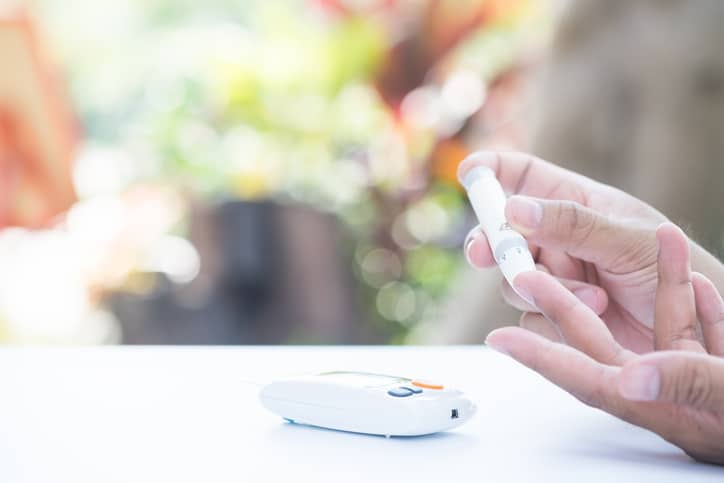New research was presented at ADA 2018, the 78th Scientific Session of the American Diabetes Association, from June 22-26 in Orlando. The features below highlight some of the studies that emerged from the conference.
Artificial Pancreas for Noncritical Patients
Prior research indicates that a closed-loop delivery system (artificial pancreas) can improve glucose control in patients with type 1 diabetes. Whether this holds true for patients with type 2 diabetes receiving noncritical care has yet to be determined. For a study, researchers randomized adults with type 2 diabetes—who required subcutaneous insulin therapy and were being treated on general wards at two tertiary hospitals—to closed-loop insulin delivery or conventional subcutaneous insulin therapy per local clinical practice. The mean percentage of time that the sensor glucose measurement was in the target range was 65.85 in the closed-loop group, compared with 41.5% in the control group. Values above the target range were found in 23.6% of the former group and 49.5% of the latter. Mean glucose levels were 154 mg/dl for the closed-loop group and 188 mg/dl for the control group.
—————————————————————-
Insomnia Linked With T2D
Previous studies suggest that inadequate sleep duration and disruption of sleep architecture appear to be associated with hyperglycemia and insulin resistance. However, few studies have examined type 2 diabetes (T2D) risk in patients with a clinical diagnosis of insomnia. The risk of developing T2D— determined to be present when two of the following occurred within 2 years: physician-entered outpatient T2D diagnosis, dispensing of an anti-hyperglycemia agent, A1C >6.5%, or fasting plasma glucose >125 mg/dl—was examined among nearly 80,000 prediabetes patients with and without insomnia for a study. Patients with insomnia were 28% more likely to develop T2D than those without the sleep disorder, after adjusting for traditional risk factors. The difference remained essentially unchanged after adjusting for baseline A1C level.
—————————————————————-
Maternal Type 1 Diabetes & Autism Risk
While studies have indicated that maternal preexisting type 2 diabetes and gestational diabetes appear to be associated with increased risk for autism spectrum disorder (ASD) in offspring, little is known regarding ASD risk associated with maternal preexisting type 1 diabetes. Researchers examined the risk of ASD in singleton children born at Kaiser Permanente Southern California (KPSC) hospitals by tracking electronic health records from age 1 year until clinical diagnosis of ASD, last date of continuous KPSC membership, death, or study end (December 31, 2017) in order to determine associations with maternal type 1, type 2, or gestational diabetes. During a median follow-up of 6.9 years, 5,827 of nearly 420,000 child participants were diagnosed with ASD. Unadjusted average annual ASD incidence rates per 1,000 children were 4.4 for exposure to type 1 diabetes, 3.6 for type 2 diabetes, 2.9 for gestational diabetes by 26 weeks, 2.1 for gestational diabetes after 26 weeks, and 1.8 for no diabetes.
—————————————————————-
Cost & Insulin Adherence
Between 2002 and 2013, prices for insulin analogs rose from an average of $4.34/mL to $12.92/mL, according to prior research. A study assessing the impact of increasing prices found that cost issues related to insulin use prevented one-fourth of patients with diabetes from taking insulin as prescribed. Patients in the $25,000 to $99,000 annual income bracket were significantly more likely to underuse insulin because of cost barriers that those in higher income brackets. Those who underused insulin because of cost had a three-fold higher odds of poor glycemic control when compared with those not underusing. While biosimilar insulins are now available, costs are not substantially lower than those for regular analogs.
—————————————————————-
Birth Control & Postmenopausal Diabetes
With estrogen is an important regulator of glucose homeostasis, previous large-scale, prospective studies have assessed the effect of current use of oral contraceptives on the incidence of diabetes in premenopausal women, finding no evidence of an association. However, in a first-of-its-kind study, researchers demonstrated that past use of oral contraceptives increased the prevalence of insulin resistance and diabetes among postmenopausal women, particularly in those who used these agents for longer than 6 months. Rates of diabetes were 19.4% for those who used oral contraceptives for longer than 6 months, 14.4% for those who used these drugs for less than 6 months, and 14.3% for those who had never used oral birth control.
—————————————————————-
Clinical Inertia Linked With Uncontrolled Diabetes
Researchers who defined clinical inertia as not being prescribed a new class of diabetes medication or having persistent uncontrolled diabetes found cost to be one of the biggest barriers to overcoming clinical inertia. “Failure of healthcare providers to initiate or escalate therapy when indicated,” was common in the large study of patients with uncontrolled type 2 diabetes. While action was observed in 90% of patients, only 56% achieved glycemic control (A1C < 8.0%) within 2 years, with an average time of about 9 months. Uncontrolled diabetes was more likely to persist in the patients who had a lower level of education or lived in poorer neighborhoods. The study authors suggest that many patient- and physician-level factors could be contributing to persistent uncontrolled diabetes.


